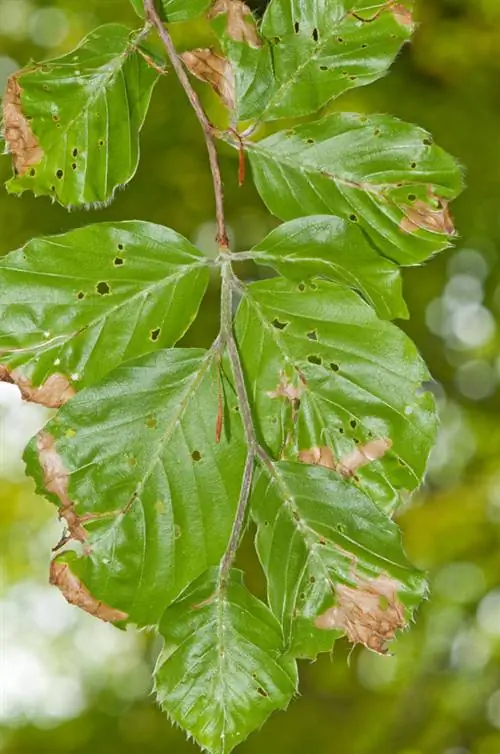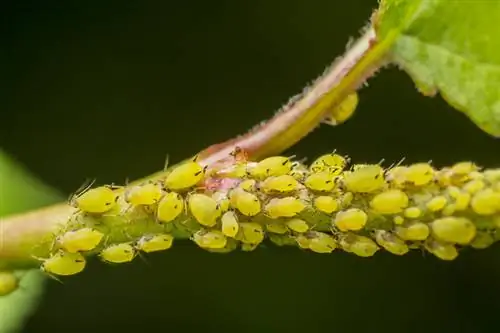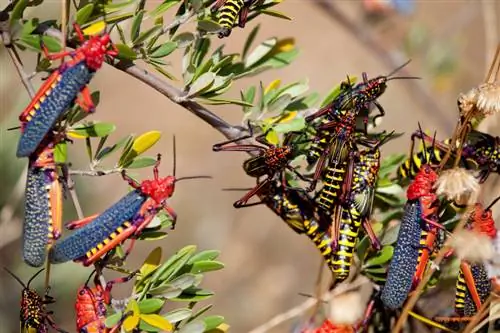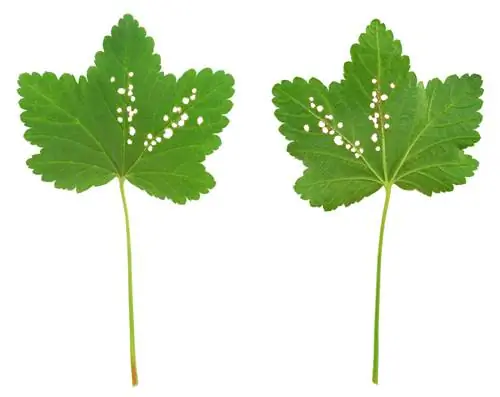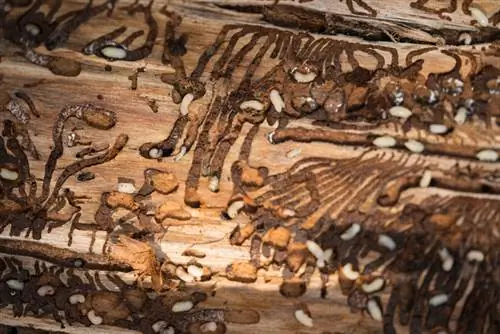- Author admin [email protected].
- Public 2023-12-16 16:46.
- Last modified 2025-01-23 11:20.
There are only a few pests that really cause problems for a beech tree. Mainly young beech trees can be seriously damaged by this, but older trees can usually cope with the plague on their own. The beech mealybug is the most common representative. How to recognize an infestation and how to combat the pest.
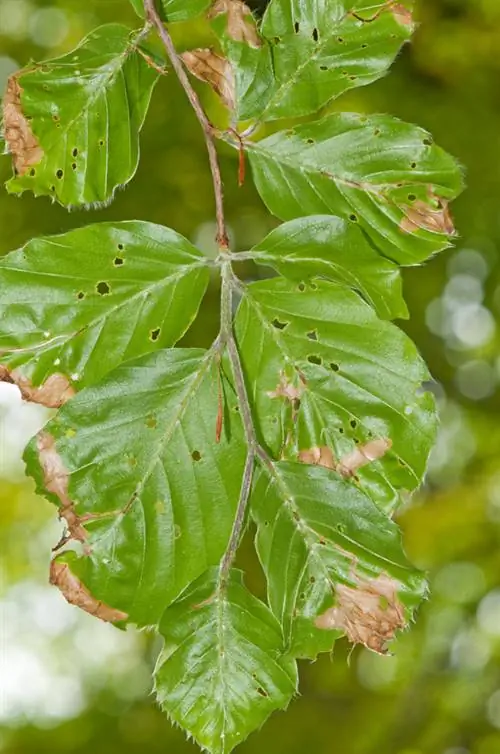
How do I fight pests on beech trees?
The most common pests on beech trees are beech mealybugs, which deform, dry and cause the leaves to fall off. To combat them, cut off affected parts, use a special insecticide, or introduce beneficial insects such as ladybugs and lacewings into your garden.
The beech ornamental louse is the most common
The beech ornamental louse is an aphid that lives mainly on the underside of the beech leaf. Even though she has wings, she stays on the tree the whole time.
The beech ornamental louse is surrounded by woolly fur. That's why it is also called the beech mealybug. It secretes a liquid called honeydew.
Signs of beech ornamental lice infestation
An infestation of beech ornamental lice can be seen on the leaves. The leaves begin to deform. They curl up, dry up and fall off.
These signs can also occur with fungal diseases. Therefore, look under the leaves to see whether there are mealybugs there and whether the leaves are very sticky. Sometimes ant trails run up into the tree.
How to combat pests on beech trees
Beech ornamental lice are not easy to combat. They are trapped by the honeydew and cannot be removed using normal sharpening agents.
- Cut off affected parts
- Apply insecticide
- Settling beneficial insects in the garden
If the infestation is minor, cut off all affected parts of the plant. Carefully collect the fallen leaves. Dispose of leaves and shoots in the garbage can and not in the compost heap.
If the infestation is severe, get an insecticide that is suitable for mealybugs. It works by spreading a film over the lice, depriving them of oxygen. These products should be used sparingly as they can harm beneficial insects.
Introduce beneficial insects in the garden
The best and he althiest control measure is to introduce beneficial insects in the garden that feed on beech mealybugs. Hang insect hotels for ladybirds, lacewings and hoverflies near endangered beech trees.
Tip
Beech trees suffer more often from fungal diseases. These occur more frequently when the weather is too humid or too dry. Fungal infestation only needs to be treated on young beech trees.

